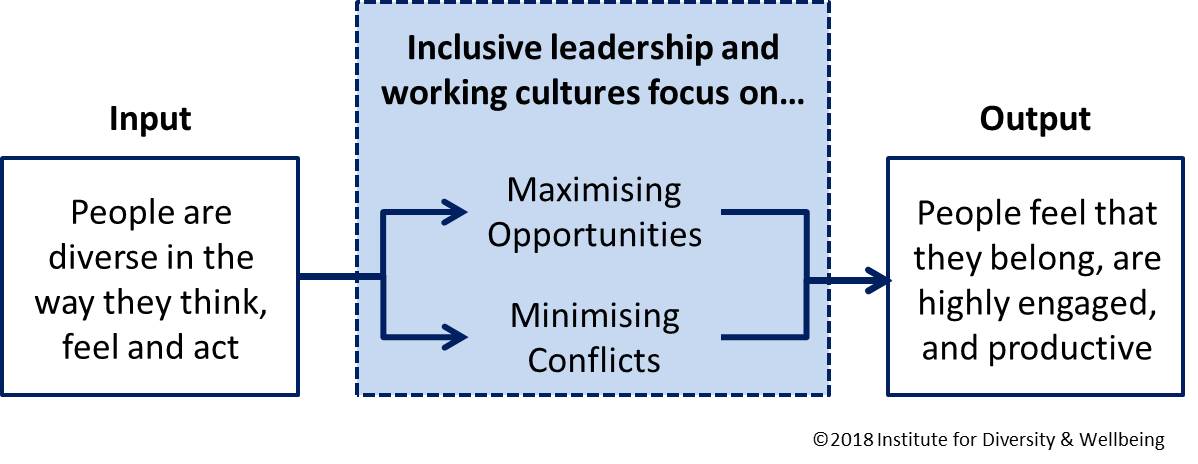How do we effectively manage conflict and negative feelings at work? The Global Human Capital Report (2008) suggests that 75% struggle with conflict and people surveyed are spending on average over two hours per week on conflict at work. This time is directly impacting peoples’ wellbeing and productivity.
Negative feelings and their impact
In a conflict, one or more people have negative feelings which often lead to the following unproductive behaviours.
- Avoidance/withdrawal – no or minimal communication between the parties
- Confrontation – the parties constantly try to win each other over
- Positioning – the parties overtly or covertly discredit each other.
Detecting early signs of a conflict is important as negative feelings grow like cancer. An earlier intervention is easier and has a higher chance of success. Negative emotions and thoughts trigger behaviours (David Rock, 2006) which are causing stress or even physical and mental illness for those involved, including the bystanders. Unfortunately, some people are spending weeks and months in this unhealthy space often followed by their resignation, breakdown or formal complaint. When the wellbeing of people suffers, the company suffers as a result.
The connection between conflict and opportunity
People can perceive and experience one and the same situation very differently. A healthy debate for one person can be experienced by another person as an emotionally draining conflict. People think, feel and react in different ways. While this diversity in people can be a valuable asset in the workplace, diversity can at the same time be a source of conflict. The saying no gain without (the risk of) pain rings true here. How to manage conflict and negative feelings at work? Let’s keep first in mind that working with people can lead to opportunities as well as conflicts. Attempts to leverage from the diversity of people through leadership and culture change initiatives should therefore focus on maximising the opportunities while minimising conflicts as shown in the figure below.

Organisations have diverse people to varying degrees as no person is the same. Opportunities arise when people with diverse thoughts and skills understand how to acknowledge and use their individual differences for the greater good of the team or organisation. On the flipside, conflicts emerge when people cannot see the value of each other and when they struggle to make people feel acknowledged and listened to. In those instances, negative feelings emerge and turn opportunities into conflicts. A combination of maximising opportunities (gains) with minimising conflicts (pains) makes working with diverse people successful. In summary, opposing differences between people are opportunities. A conflict only arises when at least one person experiences negative feelings. Resolving negative feelings is critical to make people engaged and productive.
Emotions and engagement
Emotions, good and bad, are with us all the time in various intensities. We can moderate our feelings but we cannot leave them at the gate when we go to work, although generations of managers have been trained to do exactly that. How can we help people to stay positive if this is enabling them to be more productive, constructive, resilient and tolerant? Anyone can slip into a conflict. We can learn though how to prevent most of them and we can practice how to resolve a conflict quickly.
Verbalising emotions
Mathew Lieberman (2006) found in his experiments that putting emotions into words dramatically reduced the levels of stress in individuals. Lieberman suggests that the technique of labelling emotions disrupts the primitive part of our brain which is geared to switch on an automated response like flight or fight. When negative emotions are verbalised they are less likely to trigger unhelpful behaviours.
Conversations about negative emotions are best accompanied by empathy and respect to ensure the words used are not emotionally loaded or hurtful. People shy away from exploring with another person where their negative emotions come from partly because they fear hearing unpleasant things about themselves. However, addressing negative emotions instead of dancing around the elephant in the room is a very powerful way forward for people who need to work together in future. Figure 1 is an exempt from The Resolving Differences Model©, developed by the Institute for Diversity. Instead of a applying a self-centred view the model suggests to understand the other person before we are trying to be understood.

Figure 1: Exempt of The Resolving Differences Model©
How to resolve conflict
Talking about negative feelings does not mean that we are blaring out how hurt we feel. It does not mean that we are adopting the role of a counsellor either. Addressing negative feelings is about having the courage and maturity to genuinely listen to a person. The courage to show empathy, acknowledge our mistakes, how we might have contributed to the conflict. The courage to share how we feel and why. Where do I get all this courage from? You don’t need that much courage when you build your confidence through learning and practicing. You can do this in our workshops or through our online course on Resolving Differences.
Just to clarify for those who think talking about feelings is for softies and has nothing to do with the realities of business. These conversations are among the most difficult to have because people cannot hide behind position power, rules or policies. Business is made between people and this is a stripped down person to person conversation. Of course there will be many different nuances of those conversations, depending on the situation. Fact is that people who are angry with each other won’t be able to effectively collaborate and they won’t be able to find the best solutions. While feelings can mellow out over time, the damage in terms of the impact on health and productivity has already been done.
Application in practice
I share an example from my leadership coaching practice. A team leader said that she struggles to get a team member to update their system with file notes which was important for the organisation. She tried everything in the managers’ rule book but nothing really worked. They were hardly greeting each other in the morning at that stage and their perceptions of each other were heavily filtered. ‘The team leader is picking on me.’ ‘The team member is slack’.
I asked the team leader how she feels about this situation. After a pause to think she said that she was quite frustrated, even angry and that she was losing sleep over it. Then I asked how she thinks her team member feels about the situation. We started to work on how they both can have a conversation about their feelings.
Talking about feelings makes people human. Team leaders have feelings too and when they share them they show humility and become more approachable as a person. In this example, the team member started to enter the file notes because she did not want to let the person down (who happens to her team leader), the person with whom she has now a personal and emotional connection. Their relationship improved almost overnight.
We manage conflict and negative feelings at work by talking about feelings which deepens our relationships when we approach it the right way. People who can connect on a personal and emotional level contribute to their own and other people’s wellbeing as well as to a healthy bottom line of their organisation.
Get in contact with us today to find out how we can help you.
The Resolving Differences Model is available as e-learning with worksheets, guides and checklists to print. Join our community HERE.
This article has been published in the in the Employment Today Magazine in 2018 and Human Resources Magazine in March 2019.

